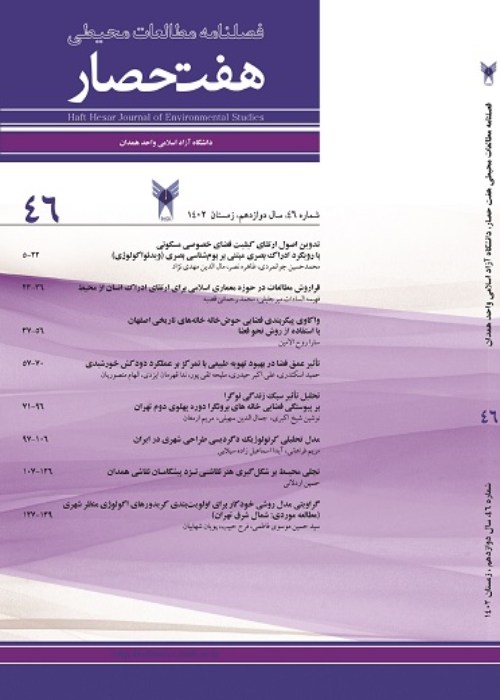The explanation of interactive behavior changes in public spaces in theinformation and communication technology era
In the latter half of the 20th century, it was recognized that good urban spaces must provide opportunities for social interaction and communication. This was deemed essential for the survival of cities. However, the advent of social media and mobile communication has gradually shifted the focus away from physical presence and towards the content and nature of cities. Information and communication technologies have become pervasive in human life, yet their impact on human presence and behavior in urban spaces is often overlooked. The introduction of connected users has redefined the concept of urban spaces in the age of technology, resulting in significant changes in interactive, cognitive, and spatial behaviors.
This study utilizes the qualitative content analysis method and coding technique in ATLAS.it software to explore the shifts in user behavior within Tehran's 6 and 12 districts. Specifically, the focus is on changes in relationships and interactive patterns.
The research based on behavioral maps shows that users' interaction behavior has shifted from direct and active communication to indirect and two-way communication. This change is more focused on the media, attention, and perception of the surrounding space and communication with others. As a result, the nature of public spaces has moved from traditional landmarks to temporal domains. This blurs the connection between the user and the space, causing the connected user to be moved from the center of the space to the margin. In an interactive approach, the user's focal role in space is weakened.
The research shows that technology plays a crucial role in how people choose, navigate, and socialize in physical spaces. This dependence on technology has led to changes in how people interact with each other and their environment. These changes offer valuable insights for urban planners and designers to create more efficient and effective spaces in modern cities. By understanding the various dimensions of these changes, planners can develop optimal solutions and patterns to enhance the user experience.
- حق عضویت دریافتی صرف حمایت از نشریات عضو و نگهداری، تکمیل و توسعه مگیران میشود.
- پرداخت حق اشتراک و دانلود مقالات اجازه بازنشر آن در سایر رسانههای چاپی و دیجیتال را به کاربر نمیدهد.



